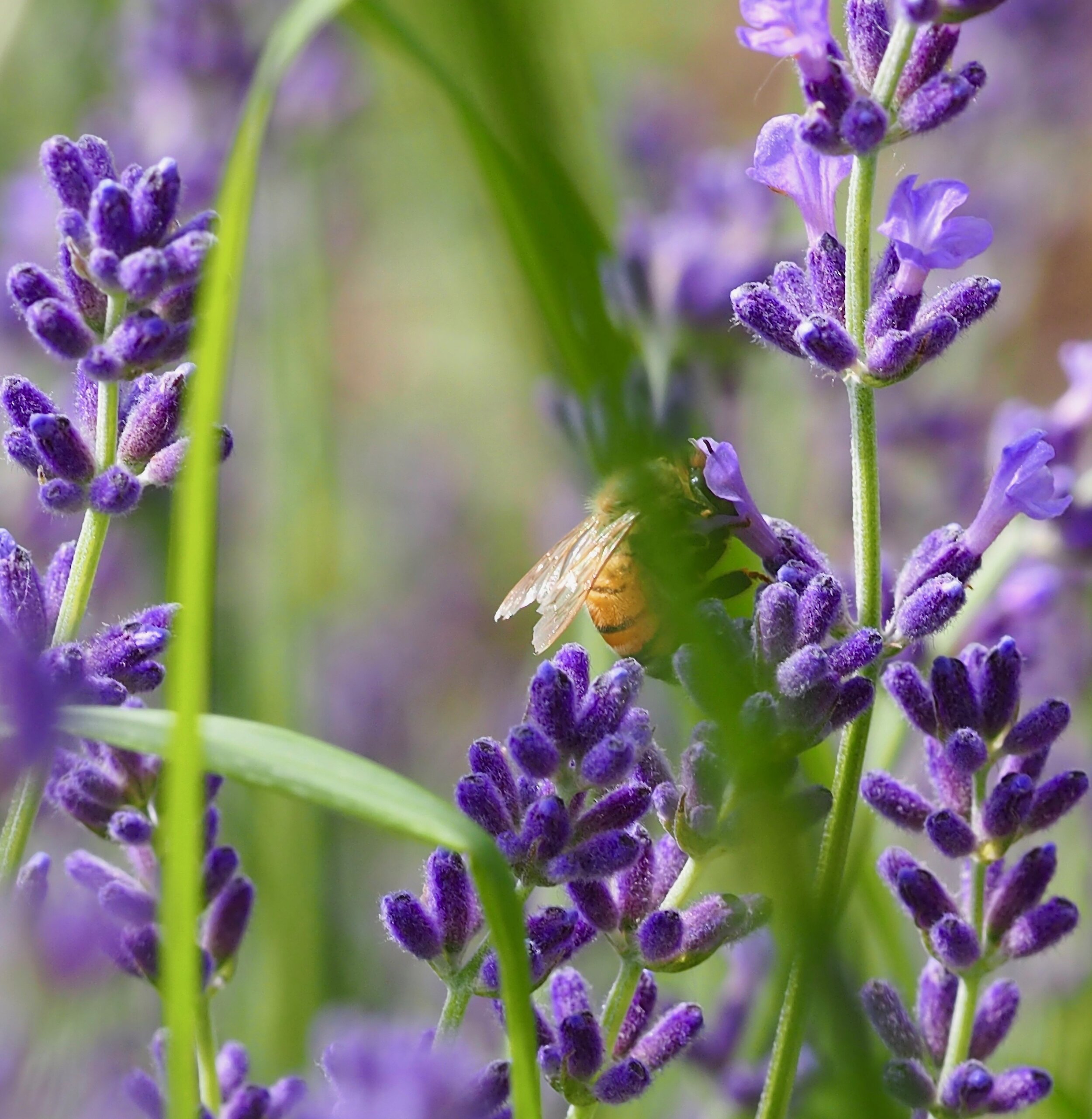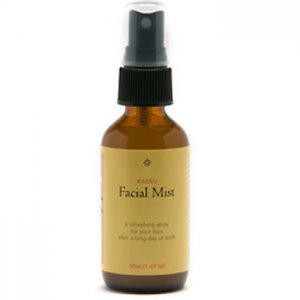 Image 1 of
Image 1 of


Lavender (Lavandula angustifolia)
When I need to relax, calm down, heal a wound or treat sunburn, Lavender is my first choice of essential oil. It holds the top spot in my first aid kit due to its beneficial properties and actions.
The fresh flowering tops of Lavender (Lavandula angustifolia) are steam-distilled, resulting in a pale yellow liquid with a floral-herbaceous aroma and soothing, slightly woody undertones. It is one of the most remarkable and powerful essential oils.
The primary chemical constituents of Lavender essential oil are linalool and linalyl acetate. Other significant compounds include terpinen-4-ol, E-β-ocimene, 1,8-cineole, and camphor. While lavender essential oil contains over 100 compounds, these are the most notable in their abundance and contribution to its characteristic aroma and properties.
Lavender has about 28-30 actions. Here is a short list:
Analgesic: pain-relieving
Antidepressant: mild depression, anxiety
Antimicrobial: kills or inhibits the growth of microorganisms like bacteria, fungi,
Antiseptic: inhibits the growth of microorganisms, preventing infection
Antispasmodic: muscle spasms
Insecticide: repels insects
Nervine: calm the nerves
Sedative: calming, promotes sleep
Vulnerary: wound healing
Lavender is known for its ability to help lower high blood pressure and calm palpitations. It has a long-established reputation as a remedy for insomnia. Additionally, Lavender is particularly effective in relieving muscular spasms, which can help alleviate discomfort from sprains, strains and rheumatic pain.
Additionally, Lavender is beneficial for the respiratory system and can aid in alleviating issues such as bronchitis, catarrh, colds and laryngitis. It is also valuable for treating many skin conditions, as it promotes new cell growth and helps balance sebum production. I have found Lavender helpful for treating bug bites, burns and wounds.
Traditionally, Lavender has been used as a folk remedy. Its dried flowers were made into tea to soothe the stomach and used as floral water to scent baths, beds, clothes and hair. Even today, dried lavender bundles are popular for repelling insects and protecting against moths. Additionally, pillows filled with lavender flowers can help restless individuals fall asleep.
Rudolph Steiner, the founder of biodynamic farming, suggested that Lavender stabilizes the physical, etheric, and astral bodies, positively impacting psychological disorders. It cleanses and soothes the spirit, relieves anger and exhaustion, and promotes a calmer approach to life. His ideas about Lavender are pretty accurate. It is one of the most therapeutic and versatile plants, as an essential oil and in herbal applications.
Comes in a 5ml-dropper bottle.
Country of origin: France
Safety: Non-toxic, non-irritant, non-sensitizing.
These statements have not been evaluated by the FDA and as such shall not be construed as medical advice implied or otherwise. No claims are made with respect to treatment of any physically diseased condition and no attempt is ever made to dissuade individuals from seeking medical treatment for any condition. In addition, this equipment, technology and products have not been evaluated by the FDA, nor are they intended to treat, cure, mitigate, diagnose or prevent any illness or disease.
When I need to relax, calm down, heal a wound or treat sunburn, Lavender is my first choice of essential oil. It holds the top spot in my first aid kit due to its beneficial properties and actions.
The fresh flowering tops of Lavender (Lavandula angustifolia) are steam-distilled, resulting in a pale yellow liquid with a floral-herbaceous aroma and soothing, slightly woody undertones. It is one of the most remarkable and powerful essential oils.
The primary chemical constituents of Lavender essential oil are linalool and linalyl acetate. Other significant compounds include terpinen-4-ol, E-β-ocimene, 1,8-cineole, and camphor. While lavender essential oil contains over 100 compounds, these are the most notable in their abundance and contribution to its characteristic aroma and properties.
Lavender has about 28-30 actions. Here is a short list:
Analgesic: pain-relieving
Antidepressant: mild depression, anxiety
Antimicrobial: kills or inhibits the growth of microorganisms like bacteria, fungi,
Antiseptic: inhibits the growth of microorganisms, preventing infection
Antispasmodic: muscle spasms
Insecticide: repels insects
Nervine: calm the nerves
Sedative: calming, promotes sleep
Vulnerary: wound healing
Lavender is known for its ability to help lower high blood pressure and calm palpitations. It has a long-established reputation as a remedy for insomnia. Additionally, Lavender is particularly effective in relieving muscular spasms, which can help alleviate discomfort from sprains, strains and rheumatic pain.
Additionally, Lavender is beneficial for the respiratory system and can aid in alleviating issues such as bronchitis, catarrh, colds and laryngitis. It is also valuable for treating many skin conditions, as it promotes new cell growth and helps balance sebum production. I have found Lavender helpful for treating bug bites, burns and wounds.
Traditionally, Lavender has been used as a folk remedy. Its dried flowers were made into tea to soothe the stomach and used as floral water to scent baths, beds, clothes and hair. Even today, dried lavender bundles are popular for repelling insects and protecting against moths. Additionally, pillows filled with lavender flowers can help restless individuals fall asleep.
Rudolph Steiner, the founder of biodynamic farming, suggested that Lavender stabilizes the physical, etheric, and astral bodies, positively impacting psychological disorders. It cleanses and soothes the spirit, relieves anger and exhaustion, and promotes a calmer approach to life. His ideas about Lavender are pretty accurate. It is one of the most therapeutic and versatile plants, as an essential oil and in herbal applications.
Comes in a 5ml-dropper bottle.
Country of origin: France
Safety: Non-toxic, non-irritant, non-sensitizing.
These statements have not been evaluated by the FDA and as such shall not be construed as medical advice implied or otherwise. No claims are made with respect to treatment of any physically diseased condition and no attempt is ever made to dissuade individuals from seeking medical treatment for any condition. In addition, this equipment, technology and products have not been evaluated by the FDA, nor are they intended to treat, cure, mitigate, diagnose or prevent any illness or disease.
When I need to relax, calm down, heal a wound or treat sunburn, Lavender is my first choice of essential oil. It holds the top spot in my first aid kit due to its beneficial properties and actions.
The fresh flowering tops of Lavender (Lavandula angustifolia) are steam-distilled, resulting in a pale yellow liquid with a floral-herbaceous aroma and soothing, slightly woody undertones. It is one of the most remarkable and powerful essential oils.
The primary chemical constituents of Lavender essential oil are linalool and linalyl acetate. Other significant compounds include terpinen-4-ol, E-β-ocimene, 1,8-cineole, and camphor. While lavender essential oil contains over 100 compounds, these are the most notable in their abundance and contribution to its characteristic aroma and properties.
Lavender has about 28-30 actions. Here is a short list:
Analgesic: pain-relieving
Antidepressant: mild depression, anxiety
Antimicrobial: kills or inhibits the growth of microorganisms like bacteria, fungi,
Antiseptic: inhibits the growth of microorganisms, preventing infection
Antispasmodic: muscle spasms
Insecticide: repels insects
Nervine: calm the nerves
Sedative: calming, promotes sleep
Vulnerary: wound healing
Lavender is known for its ability to help lower high blood pressure and calm palpitations. It has a long-established reputation as a remedy for insomnia. Additionally, Lavender is particularly effective in relieving muscular spasms, which can help alleviate discomfort from sprains, strains and rheumatic pain.
Additionally, Lavender is beneficial for the respiratory system and can aid in alleviating issues such as bronchitis, catarrh, colds and laryngitis. It is also valuable for treating many skin conditions, as it promotes new cell growth and helps balance sebum production. I have found Lavender helpful for treating bug bites, burns and wounds.
Traditionally, Lavender has been used as a folk remedy. Its dried flowers were made into tea to soothe the stomach and used as floral water to scent baths, beds, clothes and hair. Even today, dried lavender bundles are popular for repelling insects and protecting against moths. Additionally, pillows filled with lavender flowers can help restless individuals fall asleep.
Rudolph Steiner, the founder of biodynamic farming, suggested that Lavender stabilizes the physical, etheric, and astral bodies, positively impacting psychological disorders. It cleanses and soothes the spirit, relieves anger and exhaustion, and promotes a calmer approach to life. His ideas about Lavender are pretty accurate. It is one of the most therapeutic and versatile plants, as an essential oil and in herbal applications.
Comes in a 5ml-dropper bottle.
Country of origin: France
Safety: Non-toxic, non-irritant, non-sensitizing.
These statements have not been evaluated by the FDA and as such shall not be construed as medical advice implied or otherwise. No claims are made with respect to treatment of any physically diseased condition and no attempt is ever made to dissuade individuals from seeking medical treatment for any condition. In addition, this equipment, technology and products have not been evaluated by the FDA, nor are they intended to treat, cure, mitigate, diagnose or prevent any illness or disease.




